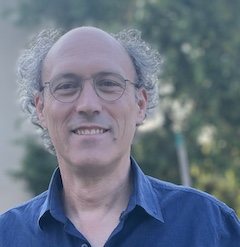NBA History of Science Seminar: Shaul Katzir
Shaul Katzir (Tel Aviv University), “The Discovery and Establishment of the Variability of the Earth's Rotation”

In the late 1920s, astronomers became convinced that the earth’s rotation on its axis is variable, and therefore cannot serve as the basis for time measurement, as it had been until then. How could they reach such a conclusion without having an external time standard to compare it with? What did different scientists regard as sufficient evidences for establishing the variability and when did they convince themselves of that? These are the main questions answered in this talk.
An apparent anomaly in the moon’s position relative to its theoretical one had triggered the hypothesis of a variable rotation of the earth in the 1860s. To make this hypothesis plausible, astronomers had to show that a variable rotation could account for similar differences between theory and observations of other celestial bodies. Although this was an established and quite straightforward method, inferring that this was indeed the case was far from simple. Establishing the theoretical and observational positions of the celestial bodies was a complex process that involved making judgement and decisions about approximations, and analysis and reliability of different observations and plausible assumptions. The inference also required a differentiating between secular acceleration and fluctuation in the observed motion of the moon. The case illustrates how a community managed to reach a scientific consensus from numerous different evidences, some of them conflicting, many of them themselves based on theories and empirical deductions, even when other hypotheses could explain most of the apparent anomalies and the accepted assumption did not fully fit the quantitative data at least until 1939.
Shaul Katzir is Director of the Cohn Institute for the History and Philosophy of Science and Ideas at Tel Aviv University.
